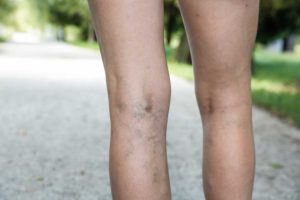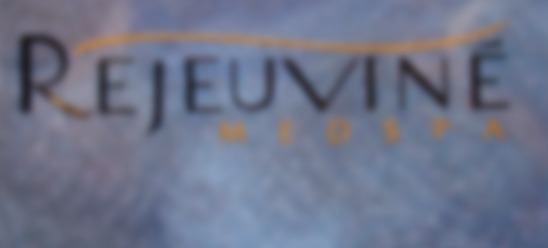 Are you tired of looking down and seeing those dark purple twisted veins on your legs? Are you sick of wearing long clothing to cover them up?
Are you tired of looking down and seeing those dark purple twisted veins on your legs? Are you sick of wearing long clothing to cover them up?
Varicose veins are incredibly common and there are multiple treatments that can help.
Through vein removal treatments, you can obliterate the appearance of varicose veins. But first, read these 7 important things you must know about varicose veins.
What Are They?
Varicose veins are swollen and damaged veins near the surface of your skin, most commonly found on the legs.
When these superficial veins become weakened or damaged, they swell. Most of the time, you only notice the visual symptoms on your skin. However, if left untreated, varicose veins can lead to restless leg syndrome, cramps, and limited mobility.
It’s a common condition that affects women more than men, especially as we age because the elasticity of our veins decreases.
Here are 7 things you should know about varicose veins:
1. They Could Be a Sign of An Underlying Problem
Most of the time, varicose veins are just a superficial condition that we treat because we don’t like their appearance.
However, in some cases, they can be a sign of a serious underlying health condition. Varicose veins can be a sign of deep vein thrombosis and blood clots.
Some people are genetically disposed to suffer these ailments and have varicose veins.
2. Earlier Treatment is Better Than Later
As with most health issues, it’s better to treat as soon as possible before letting it get worse.
With varicose veins, you will rarely have a single damaged vein. Where there’s one, there will be more. So, it’s crucial to treat them at the first sign of appearing.
However, if you plan on having children or are pregnant, wait until you’re done that chapter in your life to seek treatment. It’s common for pregnancy to cause varicose veins.
You should consider vein removal and see a specialist at the first sign of varicose veins.
3. Prevention is Key
There are multiple things you can do to prevent the onset of varicose veins.
Start by exercising regularly to improve blood flow and circulation. It’s important to prevent obesity because the heavier you are, the more pressure is put on your circulatory system.
You should also make it a habit to have your legs raised when resting and not to cross your legs while sitting. Also, avoid clothing that is tight and constricting around your waist and legs.
4. Creams Aren’t Likely to Work
The cosmetic market is full of creams and pills that claim to resolve varicose veins from the inside out.
This is highly unlikely, however, because these veins are already damaged. They can’t be healed or fixed to become healthy veins again.
Creams that have anti-inflammatory properties may help reduce the size of varicose veins, but they won’t remove them altogether.
Successful treatment comes from a doctor or aesthetician.
5. Vein Removal: Sclerotherapy Treatment
One of the most successful treatments for varicose veins is sclerotherapy.
Through a needle, the sclerosant chemical is injected into the varicose veins which cause those veins to scar and close. It stops blood from trying to flow through the faulty valves.
This treatment is low risk, but it can be somewhat painful due to the chemical being injected. Although the aesthetician can apply general anesthesia to the area, you may feel a pinch of the needle or a burn from the injection.
However, it is a very safe treatment that doesn’t require a doctor to perform. It can be done within one day without requiring any bed rest or intense aftercare.
You may be required to wear compression stockings after treatment to maintain pressure and prevent blood return.
6. Vein Removal: Laser Treatment
Another successful treatment is laser vein removal.
Essentially, the laser’s energy heats up the vein until it seals the faulty valve and the vein shuts down. The body then absorbs it, effectively allowing the varicose veins to disappear.
This is also a low-risk treatment that can be done without a doctor present.
Simply go to a cosmetic spa and a trained aesthetician will administer the treatment. It’s an excellent option for patients who don’t like needles.
Varicose veins that are extremely swollen may require multiple sessions of laser treatment.
7. Don’t I Need Those Veins?
The veins that are removed or destroyed during treatment were no longer of use to the body.
Our bodies have deep veins and superficial veins. Deep veins are responsible for pumping blood to the heart and channeling it throughout our circulatory system.
Superficial veins are close to the surface of the skin and are not intrinsic to the circulation of blood. Varicose veins are superficial.
It’s completely safe and common to remove varicose veins without affecting your body’s blood flow.
Varicose Veins vs. Spider Veins
These are two separate vein ailments whose names are wrongly used interchangeably. However, similar treatments can be used for both.
Spider veins are usually thinner veins that are red, purple, or blue. They stretch across the skin like a spider web and are commonly found on the legs and face.
Sclerotherapy can be successfully used for both spider veins and varicose veins. And, similar prevention strategies are recommended for both (resting legs, staying active, avoiding restrictive clothing).
If you’re unsure which you have, book a consultation with an aesthetician who can diagnose the veins’ issue and discuss treatment options.
Ready to Get Rid of Your Varicose Veins?
No one should have to be hesitant to wear skirts in the summer because their varicose veins will show.
The benefits of vein removal go further than superficial appearance; it can prevent the serious health conditions that varicose veins can lead to. It’s best for your body health and your confidence to get them removed.
If you’re interested in learning more about available treatments or you’d like a proper diagnosis, book a consultation and we’d be thrilled to help you.

